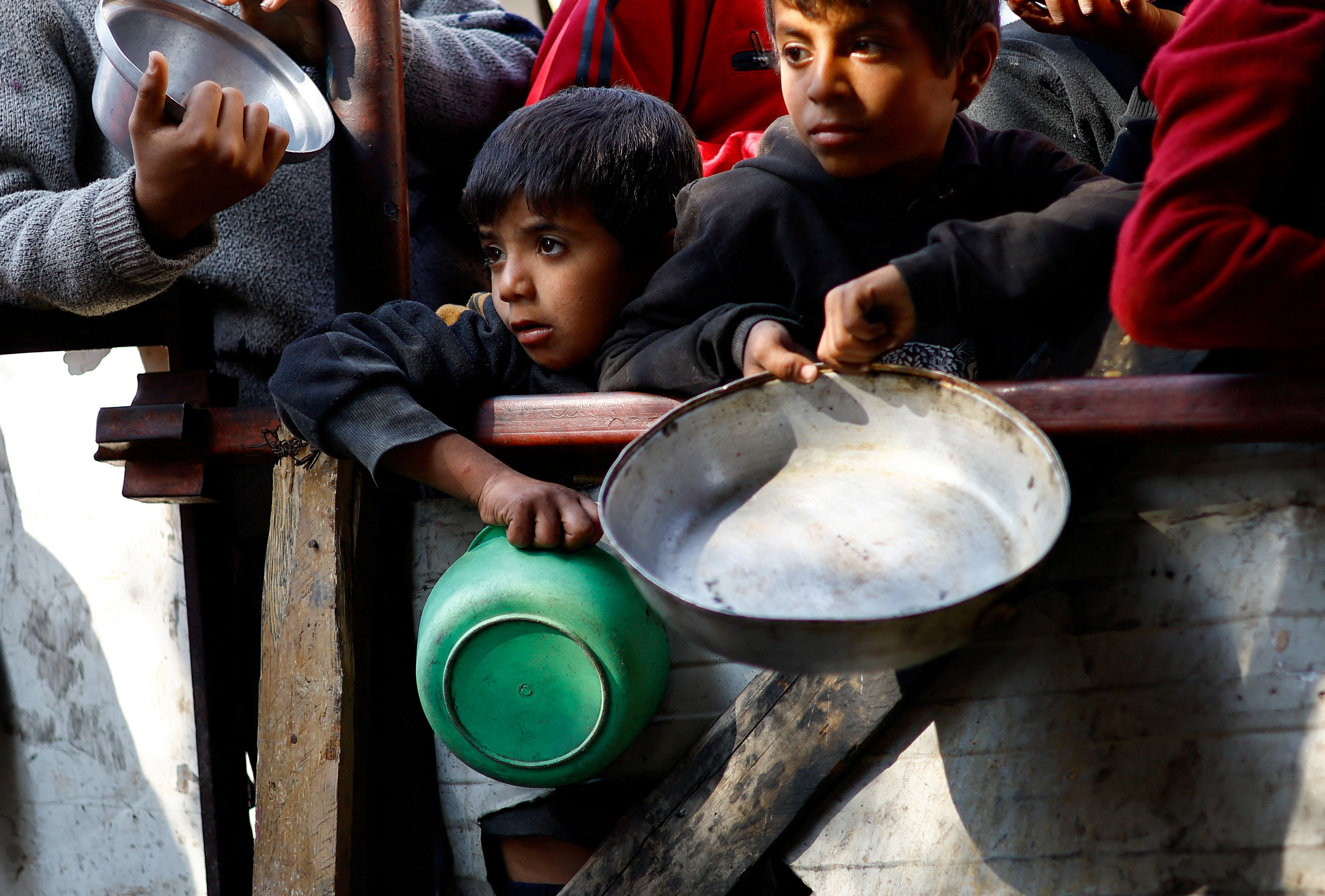
The head of the World Health Organization (WHO) has said that only the expansion of land crossings for aid deliveries into Gaza could help prevent famine in the densely populated Palestinian enclave.
“Recent efforts to deliver food by air and sea are welcome, but only the expansion of land crossings will enable large scale deliveries to prevent famine,” WHO Director-General Tedros Adhanom Ghebreyesus said on Thursday.
Children are dying from the effects of malnutrition and disease, and from a lack of adequate water and sanitation, Tedros said.
“The future of an entire generation is in serious peril,” he said. “Once again, we ask Israel to open more crossings and accelerate the entry and delivery of water, food, medical supplies and other humanitarian aid into and within Gaza.”
Countries including Jordan and the United States have been air-dropping aid along the coastline of the besieged Gaza Strip, but the method has proved to be both costly and ineffective.
Several people were killed after a parachute of supplies failed to open, bringing a pallet crashing down into a crowd of people waiting for food north of Gaza City’s Shati refugee camp.
Meanwhile, Israel has continued blocking most aid trucks from entering Gaza by land. Since its offensive began on October 7, Israel has barred the entry of food, water, medicine and other basic supplies, except for a tiny trickle of aid entering the south from Egypt at the Rafah crossing and Israel’s Karem Abu Salem (called Kerem Shalom by Israel) crossing.
Aid agencies and health officials in Gaza have warned that this is not nearly enough to cover the needs of nearly 2.3 million people in the enclave, especially those in northern Gaza, where famine is “imminent”, according to Philippe Lazzarini, head of the United Nations Relief and Works Agency for Palestine Refugees (UNRWA).
Famine is likely to occur by May in northern Gaza and could spread across the enclave by July, the world’s hunger watchdog, known as the Integrated Food-Security Phase Classification (IPC), said earlier this week.
Tedros said WHO requests to deliver supplies to the enclave were often blocked or refused.
‘Brink of death’
The IPC said 70 percent of people in parts of northern Gaza were suffering the most severe level of food shortage, more than triple the 20 percent threshold to be considered famine. In all, 1.1 million Palestinians in Gaza, about half the population, were experiencing “catastrophic” shortages of food.
Tedros earlier this month voiced concern over the situation, and said children are dying of starvation in Gaza’s north, citing a WHO team that visited two hospitals.
Dr Margaret Harris, a spokeswoman for the WHO, said on Tuesday that increasing numbers of children in Gaza are on the “brink of death” from acute hunger.
The comments have come as indirect ceasefire talks continue, and while Israel is preparing for a ground offensive on the southern city of Rafah, where more than one million displaced Palestinians are sheltering in overcrowded camps.
US Secretary of State Antony Blinken was meeting with Arab foreign ministers in Cairo on Thursday, hoping to secure a truce between Israel and Hamas.
The Health Ministry in Gaza said the Israeli air and ground campaign had killed at least 31,988 people and injured 74,188 others, many of them women and children.

According to UNRWA, as of March 16 up to 1.7 million people, or more than 75 percent of the population, had been displaced since October 7, some of them several times.
More than 60 percent of housing units have been destroyed, along with 392 education facilities, 123 ambulances and 184 mosques, it said.
The healthcare system in Gaza has essentially collapsed due to a lack of fuel to operate generators, as well as a severe lack of medical supplies amid the Israeli restrictions. Israel has targeted multiple healthcare facilities, including al-Shifa Hospital, Gaza’s largest medical facility, throughout its assault.
Israeli forces have raided al-Shifa Hospital at least four times, arresting, killing, and besieging medical staff, patients, and displaced families sheltering there.
UNRWA said last month only 12 hospitals were still partially functioning in Gaza and that there were more than 300,000 reported cases of acute respiratory infections and more than 200,000 reported cases of watery diarrhoea.
Satellite images analysed by the UN Satellite Centre show that 35 percent of the Gaza Strip’s buildings have been destroyed or damaged in the Israeli offensive, the centre said on Thursday.







